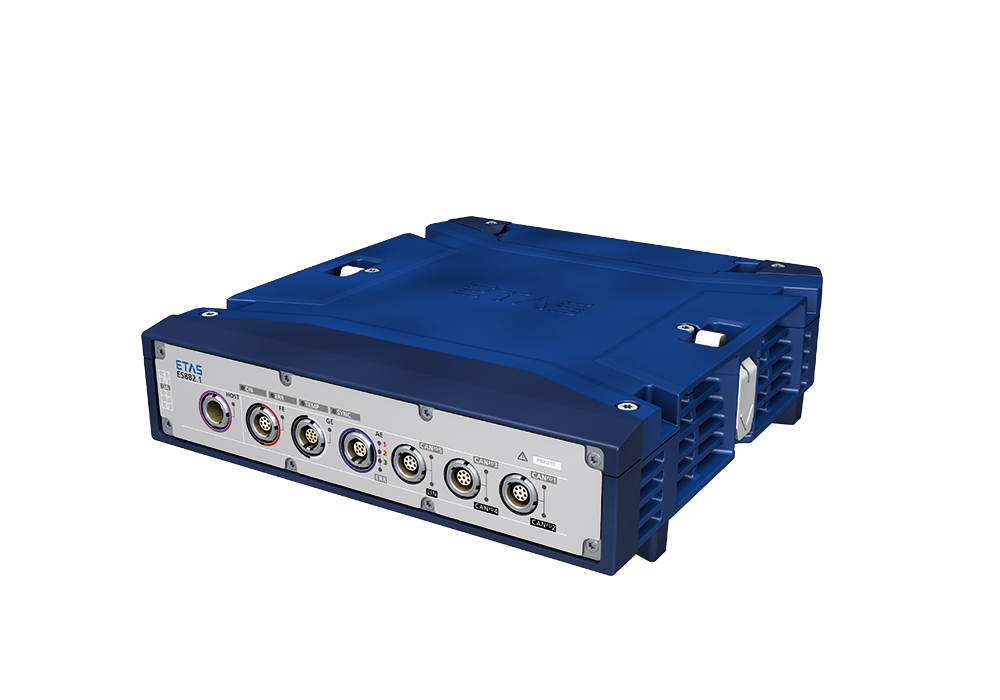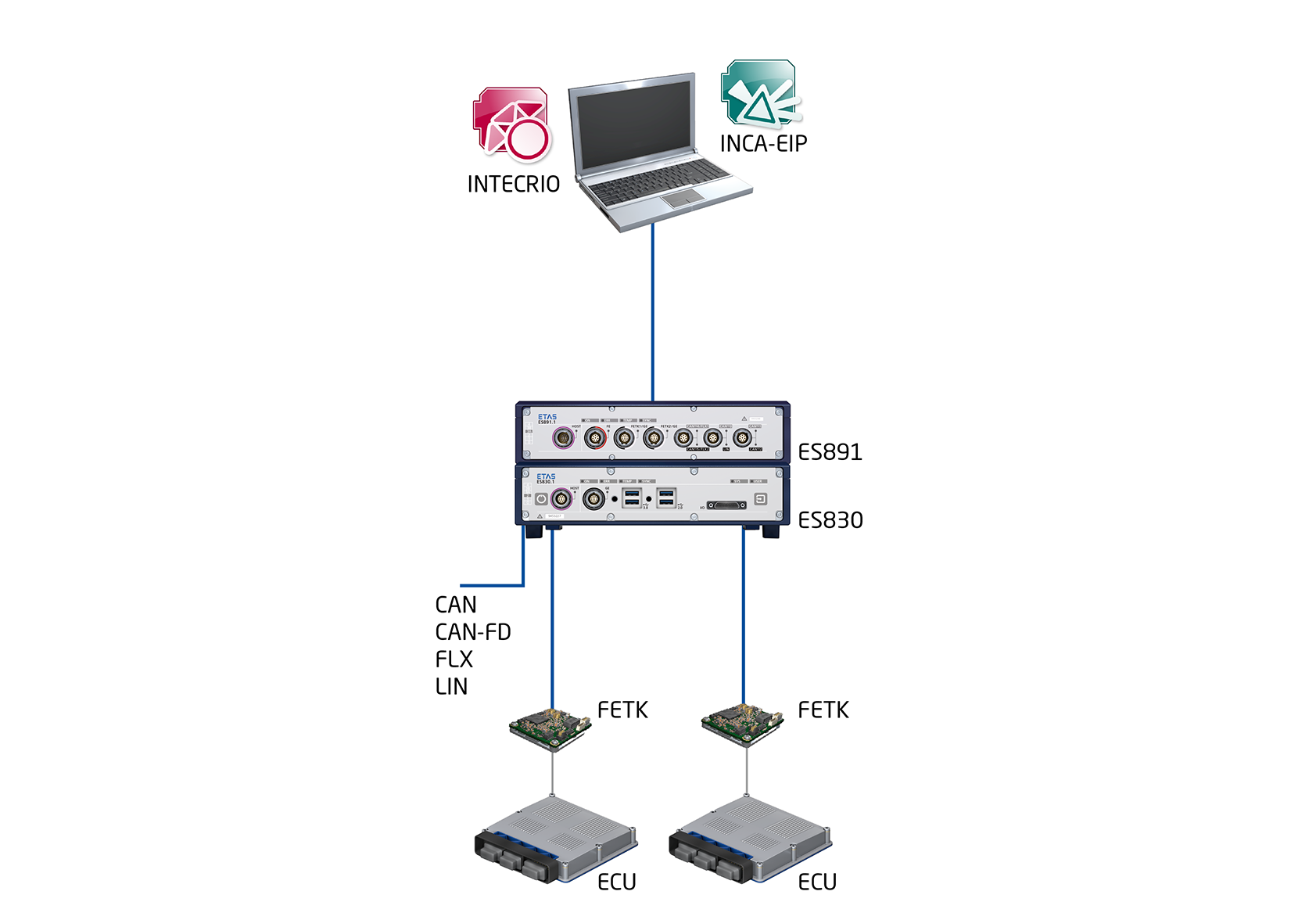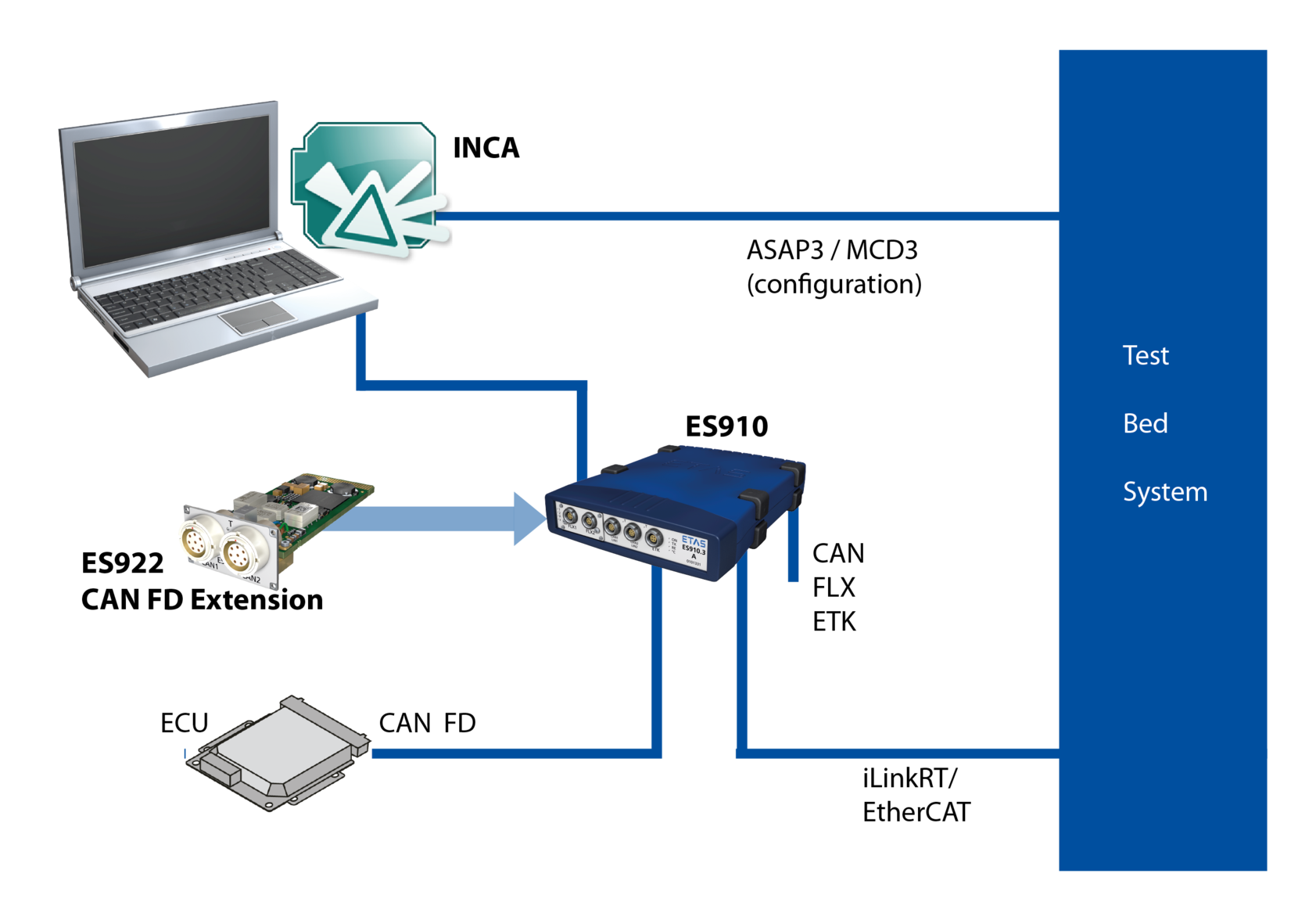Functions at a glance
- Recorder – Use Variables to Build Output Path
- UDS on FlexRay Flashing – Support Sending Functional Requests
- ES882 – INCA Integration
- INCA-EIP - Support of ES830 as E-Target Interface
- INCA-MCE - Support of XCP on CAN FD via ES922
Recorder – Use Variables to Build Output Path
INCA users often exchange experiments using the import/export mechanism. Since the imported experiment defines the path for storing the recorded data, measurement files could be stored in an unintended directory. The user can define a default path in the INCA user options, e.g., “D:\ETASData\Measure”. Starting with SP7, the recorder configuration allows to use variables in the recorder path definition. This way the user can avoid storing data in unintended directories.
The following variables are supported:
- &[COMPANY]
- &[USER]
- &[PROJECT]
- &[VEHICLE]
- &[DATABASE]
- &[EXPERIMENT]
- &[PROGRAMDESCRIPTION]
- &[WORKSPACE]
- &[WORKINGPAGE]
- &[REFERENCEPAGE]
- &[MEASUREPATH]
- Example: &[MEASUREPATH]\MyTest\&[COMPANY]\&[PROJECT]
UDS on FlexRay Flashing – Support Sending Functional Requests
Up to now, the configuration of the FlexRay transport layer for UDS on FlexRay flashing with ProF was only possible by extracting all required parameters from a Fibex file. In case the customer Fibex file does not include all parameters, e.g., for sending a functional request, or contained wrong parameters, flashing was not possible.
With SP7, ProF now supports to configure the FlexRay Transport layer with new ProF CNF parameters, thus becoming independent from incomplete or erroneous customer Fibex files.
The new CNF parameters also support to configure a functional ID for sending, e.g., for sending functional requests like clearing diagnostic DTCs.
Hint: ProF does not allow to receive responses on a functional request. Only sending is supported! The new CNF parameters and how to use them is described in the updated ProF documentation.
ES882 BR_XETK ECU and Bus Interface Module – INCA Integration

The ES882 module is a new generation ECU and bus interface with direct access to Automotive Ethernet.
INCA supports the following ES882 interfaces:
- 1 x 1000Base-T Gigabit Host/PC connection towards INCA
- 1 x 100Base-T Fast Ethernet (for ETAS legacy devices)
- 4 x 100Base-T1 Automotive Ethernet (3x for BR_XETKs)
- 1 x 1000Base-T Gigabit Ethernet (for ETAS ES8xx devices)
- 5 x CAN/CAN FD
- 1 x LIN
INCA-EIP - Support of ES830 Rapid Prototyping Module as Experimental Target Interface
Starting with SP7, the new ES830 module can be used as target for INCA-EIP. The ES830 module can be used to realize external bypass setups.
INCA-MCE - Support of XCP on CAN FD with ES922 Module
The ES922 CAN FD Module allows to use CAN FD in combination with the ES910 Rapid Prototyping and Bus Interface Module. With the update of the INCA-MCE add-on, it is possible to read data from XCP on CAN FD and use it for fast data acquisition and calibration using INCA-MCE via iLinkRT™ or EtherCAT.

